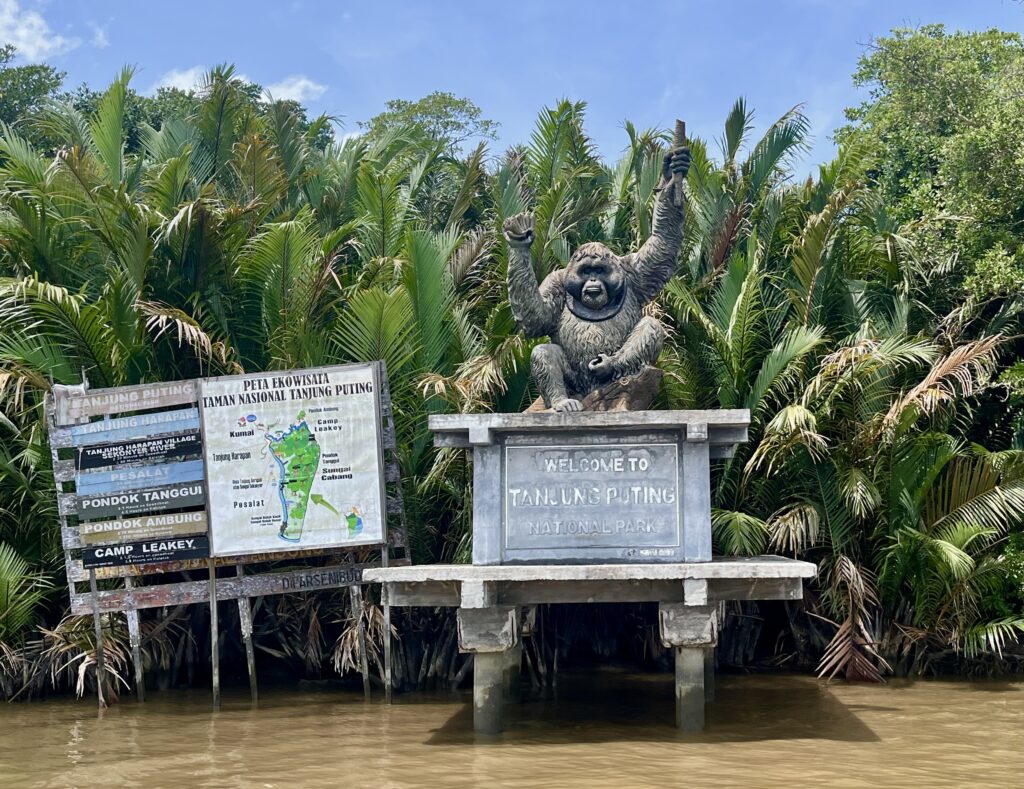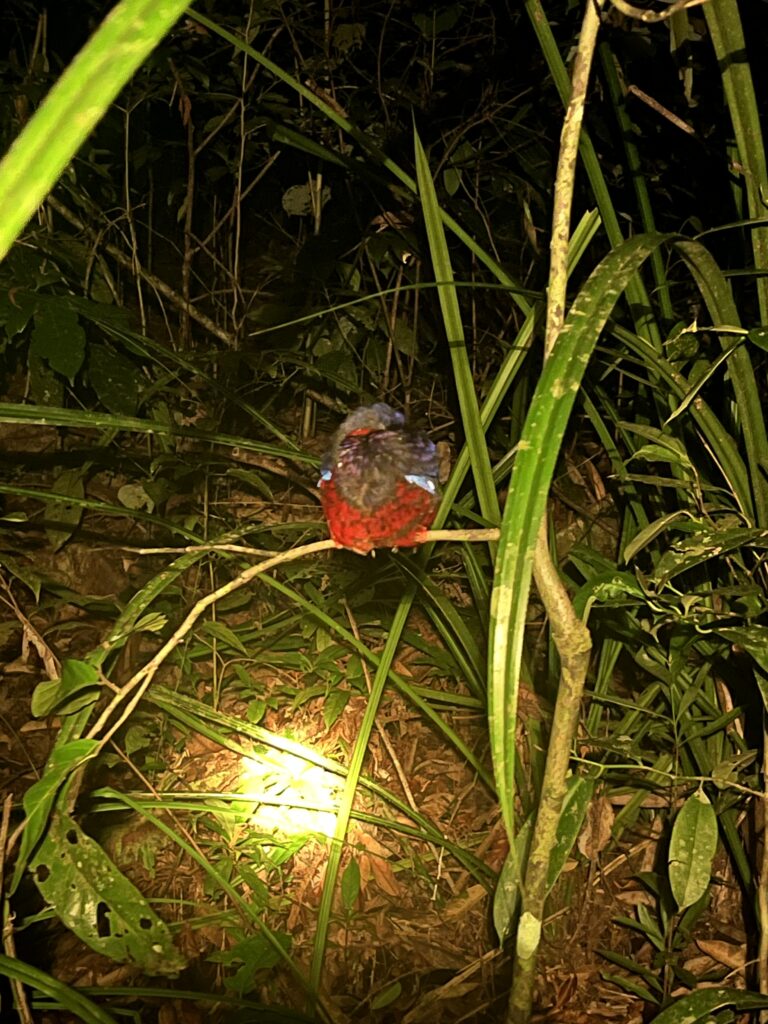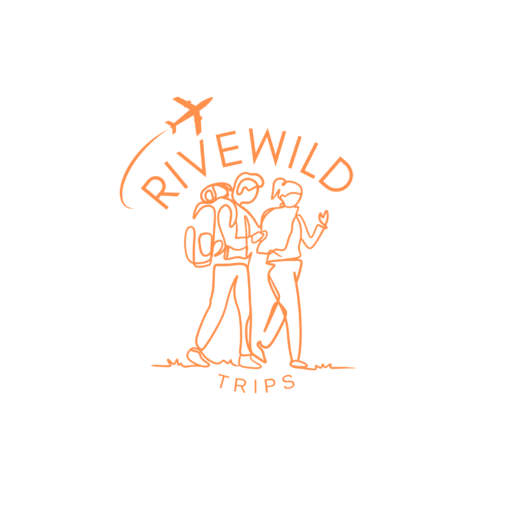When I started watching documentaries, every time I explored Indonesian wildlife, one name always stood out: Borneo. Being deeply interested in human evolution, I had always dreamed of encountering species closely related to us: the great apes. These include gorillas, orangutans and chimpanzees.
I have always been especially fascinated by orangutans (the ‘men of the forest’). This fascination drove me to plan a trip to Central Kalimantan to explore this island surrounded by jungles.
After my arrival in Jakarta, I found a Batik Air flight to Pangkalan Bun, the closest airport to explore Tanjung Puting National Park, The home of orangutans.

Tanjung Puting National Park: The Gateway to Orangutans
Tanjun Puting National Park spans an impressive 416,040 hectares, featuring diverse ecosystems including dryland dipterocarp forests, peat swamps, heath forests, mangroves, coastal beach forests, and secondary growth areas.
Visitors can reach the park from Kumai by taking a boat along the Kumai River and then the Sekonyer River, with the journey to Camp Leakey typically taking about 2 to 3 hours.

The Kelotok Experience hunting Orangutans
The only way to visit the National Park is a 3/4 days Tour, departing from the port of Kumai, with many companies offering A Kelotok, the traditional wooden riverboat, serves as your moving hotel throughout the journey, equipped with essential facilities.
The crew includes a captain, a deckhand, a cook who prepares your meals and a guide. Facilities on board include a galley (kitchen) on the lower deck, a toilet at the back, A cold box is available to keep food fresh and beverages chilled.
While the crew and guide remain on the lower deck, guests enjoy the upper deck, complete with tables, chairs, and a front platform for wildlife observation. Cruising along the river offers a relaxing way to explore, with opportunities to spot wildlife such as birds, proboscis monkeys, long-tailed macaques, wild orangutans, and more—all while sitting comfortably on board.

The park is home to approximately 300 plant species, around 200 of which produce fruit, providing the main food source for orangutans.
As you cruise along the Kumai River, which divides the national park into two sections, you’ll come across three feeding stations: Tanjung Harapan, Pondok Tanggui, and Camp Leakey.

The orangutans you encounter can be either wild or semi-wild. Semi-wild orangutans have been part of the park’s rehabilitation program, where volunteers and rangers work closely to reintroduce them to their natural habitat. These orangutans initially rely on feeding stations for sustenance, but the goal is to gradually encourage them to become fully independent, reducing their reliance on the feeding stations over time.
Below you will find the Favourite things to do on the Boat trip.
Spotting Orangutans and Gibbons.
The main reason for this trip is to spot orangutans, observing them swinging through the trees, foraging for food, and building sleeping nests. Hopefully, you’ll also have the chance to capture some great photos.
Another fascinating species you might encounter is the gibbon, part of the lesser apes. Often referred to as “Spiderman” by the rangers, gibbons are among nature’s best brachiators. Their unique ball-and-socket wrist joints allow them unparalleled speed and precision as they swing through the trees, making them a joy to watch. However, keep in mind that spotting gibbons can be quite challenging.


Night Trek with Ranger
Without a doubt, one of my favorite experiences in the national park was the night walk with an experienced ranger. Thanks to their expertise, we were able to spot a variety of wildlife, including sleeping birds, tarantulas, snakes, and other spiders. Don’t worry, the rangers are highly skilled and know exactly what they’re doing, so it’s completely safe.


Daily Trek Hunting medical Plants
The national park is also home to many medicinal plants used by pharmaceutical companies to create drugs, as well as by locals who know how to use them to treat various diseases. The daily trek with a ranger offers a chance to learn about some of these plants. Of course, this depends on the ranger’s expertise. Ours was highly skilled in this area, we learned a lot.


Canoeing in the mangroves
Canoeing through the mangroves is always a fascinating experience. Being swept away by the relaxing sound of water against the paddles, surrounded by nature, with birds flying overhead and the excitement of spotting as many animals as possible, makes it truly unforgettable.


- Planting Trees in Rainforest
Deforestation is a significant problem today, especially in Southeast Asia, where forests are being cleared to make way for oil palm plantations. Rangers and organizations dedicated to protecting orangutans are working tirelessly to improve the situation and preserve the natural habitats of countless species, helping to prevent future extinctions. We are deeply grateful for the opportunity to contribute to this project by planting a tree of our choice in the forest. Undoubtedly the most meaningful experience of this unforgettable trip.


- Enjoying Sunset along the river
After a long day of treks and activities, combined with an early wake-up and the high humidity, returning to the boat feels like a true reward. You can relax and enjoy the river and stunning sunsets as your captain searches for the perfect spot to anchor for the night, all while being surrounded by the soothing sounds of nature.

Suggestion:
- Boat Tour OrangutanApplause

Disclaimer: We are not affiliated with any of these businesses. This information is gathered from personal experiences and our feedback and we are happy to share as a helpful guide. We do not vouch for or recommend any service or establishment.
Discover More
If you loved learning about Borneo, check out our guide to: Bali, unspoiled places in the island of Gods






